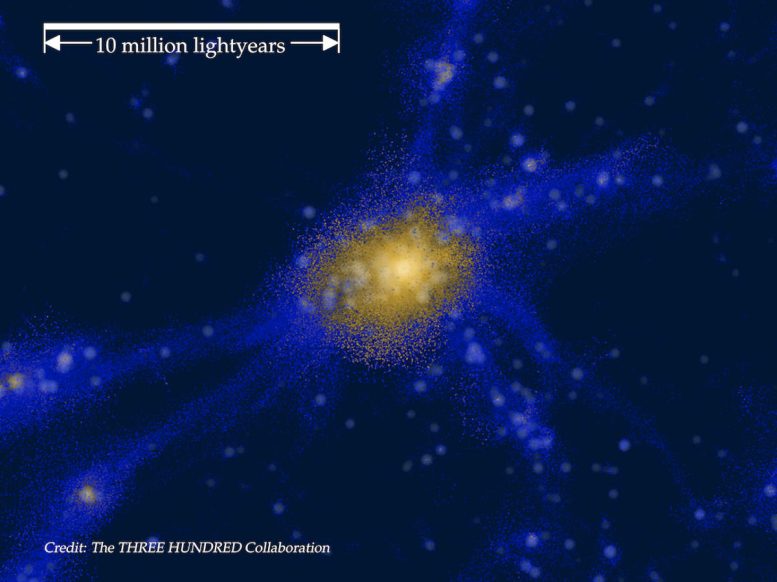
A simulated visualization depicts the scenario of large-scale heating around a galaxy protocluster, using data from supercomputer simulations. This is believed to be a similar scenario to that observed in the COSTCO-I protocluster. The yellow area in the center of the picture represents a huge, hot gas blob spanning several million light years. The blue color indicates cooler gas, which located in the outer regions of the protocluster and the filaments connecting the hot gas with other structures. The white points in the image, which is embedded within gas distribution, is the light emitted from stars. Credit: The THREE HUNDRED Collaboration
A new study published in The Astrophysical Journal Letters reports that a team of international researchers, led by the Kavli Institute for the Physics and Mathematics of the Universe (Kavli IPMU), have discovered the earliest indications of certain portions of the universe that were heated to temperatures similar to that of the intergalactic gas medium, where the majority of atoms in the universe currently reside.
The vast majority of all atoms in the universe, approximately 90%, can be found in the intergalactic gas that fills the spaces between visible galaxies. This intergalactic medium is currently in a hot and complex state, with temperatures ranging from 100,000 degrees Celsius to over 10 million degrees Celsius, referred to by researchers as the “Warm-Hot Intergalactic Medium” (WHIM).
However, more than 10 billion years ago, a time when galaxies in the universe were at the peak of forming their stars, most of the intergalactic medium existed at comparatively cooler temperatures of less than 10,000 degrees Celsius, creating a more predictable and stable phase.
An international team of researchers led by Kavli IPMU graduate student Chenze Dong and Project Assistant Professor Khee-Gan Lee have identified the furthest patch of the universe heated up to temperatures more characteristic of today’s WHIM at a time when the universe was only 3 billion years old. This region is a giant aggregation of galaxies known as ‘COSTCO-I’, a galaxy protocluster with a total mass of over 400 trillion times the mass of the Sun, and spanning several million light-years across, which was also discovered by Lee and a team of researchers at Kavli IPMU in 2022.
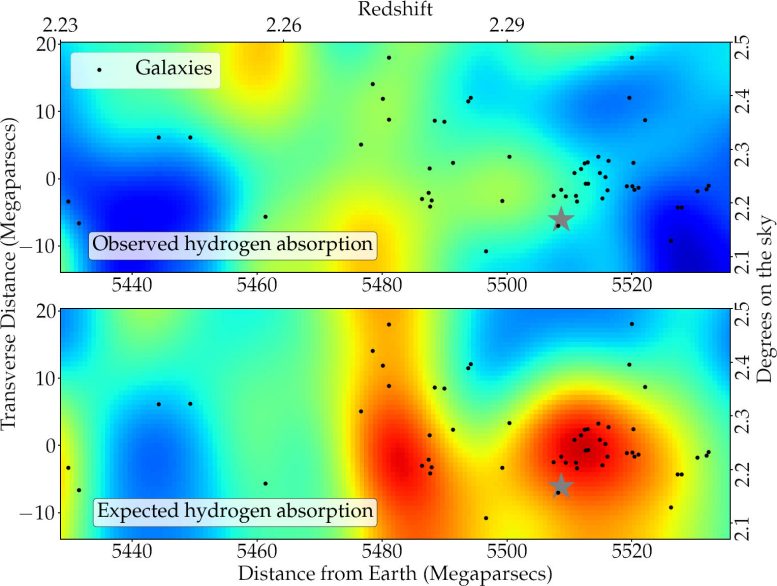
This figure compares observed hydrogen absorption in vicinity of the COSTCO-I galaxy protocluster (top panel), compared with the expected absorption given the presence of the protocluster as computed from computer simulations. Strong hydrogen absorption is shown in red, lower while weak absorption is shown in blue, and intermediate absorption is denoted as green or yellow colors. The black dots in the figure show where astronomers have detected galaxies in that area. At the position of COSTCO-I (with its center marked as a star in both panels), astronomers found that the observed hydrogen absorption is not of much different from the mean value of the universe at that epoch. This is surprising because one would expect to find extended hydrogen absorption spanning millions of light years in that region corresponding to the high observed concentration of galaxies. Credit: Dong et al.
Although galaxy protoclusters in the distant universe such as this are regularly discovered, the team found something strange when they checked ultra-violet spectra covering COSTCO-I using the 10.3-meter diameter Keck-I Telescope at the W.M. Keck Observatory on Maunakea, Hawai’i.
Usually, the large mass and size of galaxy protoclusters would cast a large shadow when viewed at the specific wavelength of 121.6 nanometers, caused by the absorption by the neutral hydrogen associated with the protocluster gas.
But no absorption shadow was found at the location of COSTCO-I.
“We were surprised at the absence because hydrogen absorption is one of the common ways to search for galaxy protoclusters, and other protoclusters near COSTCO-I do show this absorption signal”, said Dong.
The absence of neutral hydrogen tracing the protocluster indicates the gas in the protocluster must be heated to possibly a million degrees above the cool state expected for the intergalactic medium at that time in the universe.
“If we think about the present-day intergalactic medium as a gigantic cosmic stew that is boiling and frothing, then COSTCO-I is probably the first bubble in the distant past that astronomers have observed during an era while most of the pot was still cold”, said Lee.
“The properties and origin of the WHIM remain one of the biggest questions in astrophysics right now, and to be able to glimpse at one of the early heating sites of the WHIM will help reveal the mechanisms that caused the intergalactic gas to boil up into the present-day froth. There are a few possibilities for how this can happen, but it might be either from gas heating up as they collide with each other during gravitational collapse, or giant radio jets might be pumping energy from supermassive black holes within the protocluster,” he said.
“The COSTCO-I is even interesting in terms of protocluster evolution. Astronomers normally look for protoclusters in galaxies or the intergalactic medium to find them. COSTCO-I, however, cannot be found by those traditional methods. The future PFS survey will be able to search for more such protoclusters, like COSTCO-I, and reveal their evolution,” said co-author and JSPS Overseas Research Fellow Rieko Momose.
The intergalactic medium represents the gas reservoir feeding raw material to galaxies, and hot gas behaves differently from cold gas in how easily they can stream into galaxies to form stars. Being able to directly study the growth of the WHIM in the early universe would allow astronomers to build up a coherent picture of galaxy formation and the lifecycle of gas that feeds it.
Kavli IPMU astronomers are currently heavily involved in the development of a powerful new multi-object spectrograph for the 8.2m Subaru Telescope on Maunakea, known as the Subaru Prime Focus Spectrograph (PFS). With Subaru PFS, astronomers will be able to map out 40 times larger volumes than in the current study and study the gas properties in hundreds of galaxy protoclusters.
Reference: “Observational Evidence for Large-scale Gas Heating in a Galaxy Protocluster at z = 2.30” by Chenze Dong, Khee-Gan Lee, Metin Ata, Benjamin Horowitz and Rieko Momose, 14 March 2023, The Astrophysical Journal Letters.
DOI: 10.3847/2041-8213/acba89

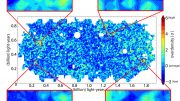
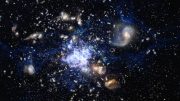
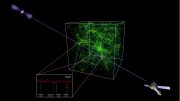
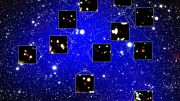
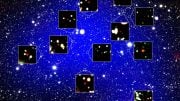
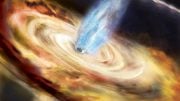
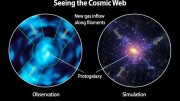
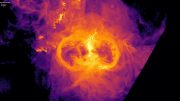
This didn’t read out clearly to me: “Astronomers normally look for protoclusters in galaxies or the intergalactic medium to find them. COSTCO-I, however, cannot be found by those traditional methods.”
But the paper clarifies on the old methods and how they found this protocluster:
“Early searches for z ≳ 1 protoclusters were dominated by searches around “signposts” such as radio galaxies or luminous quasars, leading to unrepresentative and incomplete protocluster samples. Over the past decade, however, “blind” searches in photometric or spectroscopic data have become more common (see Overzier 2016 for a review). Arguably, the most sophisticated technique to date is the application of density reconstructions and constrained simulations on z ≳ 2 galaxy redshift surveys covering representative cosmic volumes in the COSMOS field (Ata et al. 2021, 2022) … In this Letter, we use the Ata et al. (2022) protocluster sample (and associated data products) in combination with Lyα forest absorption data in the COSMOS field …”.